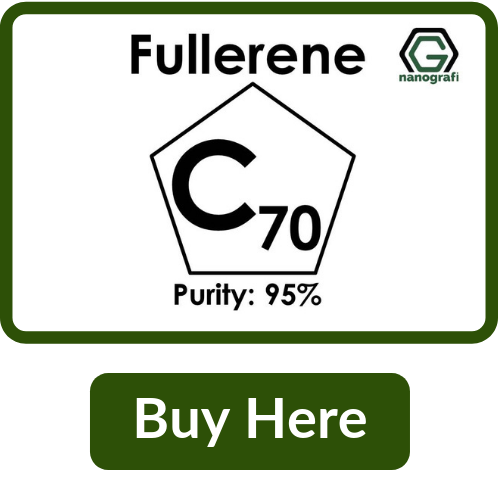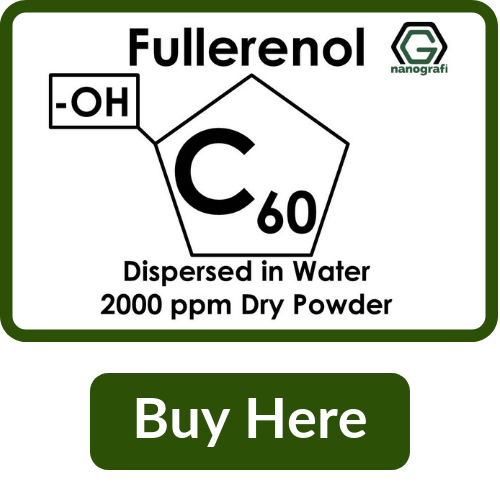Analyzed: Enormous Sphere Fullerene
A fullerene is the three-dimensional allotrope of carbon shaped like a sphere, tube or ellipsoid with the carbon molecules bound to each other through single and double bonds forming pentagonal and hexagonal fused rings. Due to their π-electrons, fullerenes exhibit interesting phenomena that are easily manipulated by chemical methods.
Fullerenes are presented with the empirical formula of Cn to adopt a closed mesh morphology with the most famous member called buckminsterfullerene (sometimes Buckyball) with the molecular formula of C60 which is named after the Americana architect and system theorist, Buckminster Fuller. The term Buckyball is used for C60 because of its similarity to a soccer ball. Fullerenes were first synthesized in 1985 and were discovered in outer space later on. The discovery of them has led to expansion of other carbon allotropes with intense research interest in the scientific community in electronics, material science and nanotechnology. Fullerenes’ unique structure and morphology make them sensitive to free radicals introducing them as potential agents for biomedical applications. Even though fullerenes are originally soluble in non-polar solvents, polar-solvent soluble fullerenes have been developed in order to facilitate their application in aqueous solutions.
1.Properties of Fullerenes
One very important property of fullerenes is that they are highly symmetric with 120 symmetrical operations including rotation and reflection in a place 1. Resistance to heat and superconductivity are the properties of fullerenes that have been extensively investigated. Accordingly, fullerenes have been found to be unusually reactant in many organic reactions namely Bingel reaction. Through modification and attaching active functional groups, the reactivity of fullerenes has been increased. Normally, fullerenes are electrically insulated, however, in the case of crystallization by alkali metals they turn out to be superconductors. Some fullerenes are chiral because of their D2 symmetry which can be used as specific sensors to detect their relevant enantiomers. Fullerenes can be built atom by atom based on the bottom-up synthesis approach or inversely by top-down approach through breaking the larger structure into the smaller parts. Taking the advantage of top-down method, asymmetric but more stable fullerenes can be achieved.
Learn from a More Specific Article Types of Fullerenes and their specific uses (C60, C70, Fullerenols)
2.Synthesis of Fullerenes
Several methods based on the top-down approach have been employed to synthesize fullerenes such as electric arc heating of graphite, resistive arc heating of graphite, laser vaporization, laser irradiation of polycyclic hydrocarbons (PAHs). Amongst, laser vaporization was the first method through which fullerenes were synthesized in a very small amount. For large quantities, however, water laser along with arc heating of graphite are applied2.

3.Applications
3.1.Fullerene in Biomedical Applications
A lot of biomedical applications have been suggested for fullerene mainly in biomedicine including photosensitivity, antioxidation, antiviral activities, drug carrying, tissue engineering and antioxidation. In a study, the gap in HIV-1 protease was tightly packed with C60 Buckyball to form protease-fullerene complex capable of eliminating and inactivating activities of viruses 3. The C60 and fullerene family derivatives can bind to protease and trigger antiviral activity. In particular, fullerenes’ amino acid complexes and cause the inhibition of viral replication through fullerenes binding to divalent metal ions and subsequently, penetrate bilayer lipids and change the effect of membranes enzymes.
3.1.1.Fullerenes against Viruses
In oxygen rich environments, fullerenes can be excited from the ground state to rich to a high energy level. Later, the fullerene energy can be transferred to an oxygen to generate a singlet oxygen. This causes given viruses to lose the ability to infect and harm a tissue 4. The superoxide onions and singlet oxygen are incredibly reactive with DNA which can in turn, facilitates tumor cells killing and termination due to cytotoxicity properties 5. Fullerenes can attract electrons and free radicals since there is abundance of carbon-carbon double bonds and LUMO orbitals which makes them very interactive to free radicals. Fullerenes can also engage in reactions with superoxide compounds in the case of an illness and recognize the free radicals in within mitochondria to sustain their membranes integrity with the subsequent cell protection from apoptosis and toxins 6.
3.1.2.Therapeutic Effect of Fullerenes in Nervous System
Fullerenes have therapeutic effects when and the nervous system is vulnerable to damage by oxidizing agents and free radicals and has a limited capacity for regeneration. It has been found that fullerenes can protect neurons in the central nervous system 2.
3.1.3.Fullerenes Antibacterial Application
Amino fullerenes and fullerols, which are the hydrophilic derivatives of fullerenes, have been proved to exhibit antibacterial behavior with an application in water treatment. This property of fullerenes can come from their ability to create singlet oxygen and superoxide when interacting with organic solvents 2.
3.1.4.Fullerenes Antioxidant Application
As mentioned earlier, fullerenes are highly reactive to free radicals through oxidizing them due to the double bonds and lowest unoccupied molecular orbital. This reactivity has been once challenged by adding some 34 methyl radicals onto a C60 making it as the world’s most capable radical scavenger and oxidizing agent 2.
3.1.5.Fullerenes for Drug Delivery
Due to selectivity, controlled release and the decent biocompatibility of fullerenes, they are regarded as potential drug carriers for cells. If right hydrophilic groups are attached the fullerenes, they turn water soluble and act exceptionally in gene and drug delivery. Studies have shown that the DNA functionalized fullerenes have remarkably been effective in lipid-base vectors 7.
4.2. Fullerenes for Photovoltaic Applications
Fullerenes strong electron accepting quality with lower energy electron transmission process have made them potential and considerable components in artificial photosynthetic applications. They have found emerging attraction in, electronics, photo catalysis and photovoltaic devices since they interact well with electron donor groups forming donor-acceptor system to generate long-lived charge separated electronic states. Some common organic donor groups linked to fullerenes cage are phythalocyanines, ruthenium complexes, metalloporphyrins, cyanines, boron-dipyrins and tetrathiafulvalenes. Also, polymer organic field-effect transistors as a class of polymer transistors that have shown to adopt improved performance 8.
4.3. Fullerenes in Polymeric Materials
Once again, fullerenes exceptional electronic behavior makes them qualified agents to be used in polymer industry. Fullerene-based polymers are synthesized by angular attachment of fullerenes to a polystyrene through Friedel-Crafts reaction or indirect biding of fullerene C60 groups like Pt (aba)2, Pt (cad)2 and Pd2(aba)3 CHCl3. The reaction with each one of these spacer agents displaces the ligands in order to for them to be insoluble PtC60, which are originally reduction-oxidization active polymers based on fullerenes. Moreover, these polymers can also be produced through reducing fullerenes under cathodic conditions in an electrochemical method 9.
Fullerenes as the spherical three-dimensional allotropes are another class of the magic carbon derivatives with interesting properties and applications in nano science, medicine and industry based on the remarkable electronic property. The world has now become a place where a lot of unexpected events take place day in and day out. As fullerenes show excellent antiviral behavior, their use can extensively be supported to fight viral attacks which have been claiming millions of lives.
References
1. Trimethoxysilylmethyl, S., Sherstyannikova, L. V & Voronkov, M. G. E I E I E I. 74, 551–558 (2004).
2. Nimibofa, A., Newton, E. A., Cyprain, A. Y. & Donbebe, W. Fullerenes: Synthesis and Applications. J. Mater. Sci. Res. 7, 22 (2018).
3. Friedman, S. H. et al. Inhibition of the HIV-1 Protease by Fullerene Derivatives: Model Building Studies and Experimental Verification. J. Am. Chem. Soc. 115, 6506–6509 (1993).
4. Yamakoshi, Y. et al. Active Oxygen Species Generated from Photoexcited Fullerene (C 60) as Potential Medicines: O2-. versus 1O2. J. Am. Chem. Soc. 125, 12803–12809 (2003).
5. Da Ros, T., Spalluto, G. & Prato, M. Biological applications of fullerene derivatives: A brief overview. Croat. Chem. Acta 74, 743–755 (2001).
6. Hsu, S. & Luo, P. From Nanoarchitectonics to Tissue Architectonics: Nanomaterials for Tissue Engineering. Advanced Supramolecular Nanoarchitectonics (Elsevier Inc., 2019). doi:10.1016/b978-0-12-813341-5.00012-7
7. Yamakoshi, Y., Sueyoshi, S., Fukuhara, K. & Miyata, N. OH and O2- generation in aqueous C60 and C70 solutions by photoirradiation: An EPR study [7]. J. Am. Chem. Soc. 120, 12363–12364 (1998).
8. Bottari, G., Kahnt, A., Guldi, D. M. & Torres, T. Protonation-induced changes in the photophysical properties of a phthalocyanine and a covalently-linked, phthalocyanine-C60 fullerene dyad. ECS J. Solid State Sci. Technol. 2, (2013).
9. Hibbert, D. B. & Hibbert, D. B. Electrochemical synthesis. Introd. to Electrochem. 254–273 (1993). doi:10.1007/978-1-349-22721-1_11
Recent Posts
-
Advanced Materials for Unmanned Aerial Vehicle (UAV) Protection Against Laser
Consider a UAV on a critical mission, rendered inoperative by a sudden laser attack. With the increa …26th Jul 2024 -
Simulation and Modeling of Material Properties
Our world is composed of a dazzling array of materials, each with its own unique properties that dic …19th Jul 2024 -
Advanced Coatings for Superior Corrosion and Wear Resistance
Corrosion and wear pose significant challenges across various industries, leading to substantial eco …12th Jul 2024







